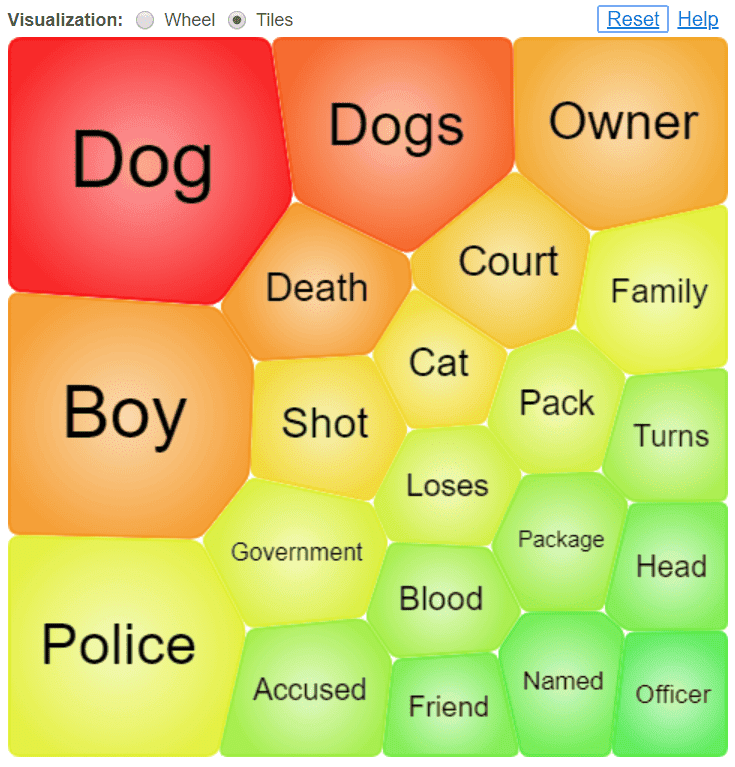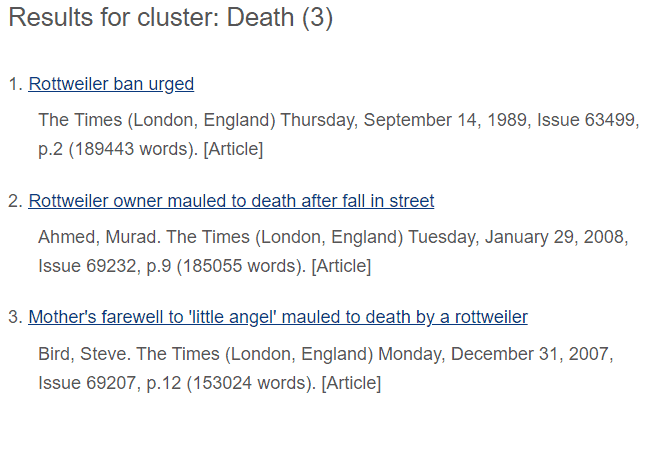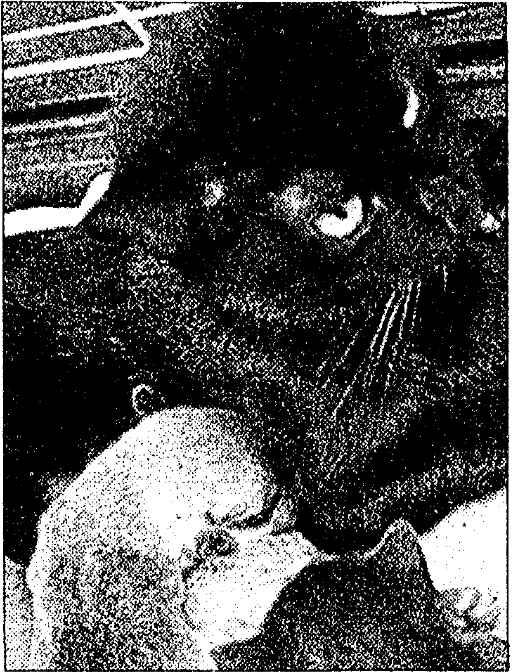│ By Evelyn Moran, Gale Ambassador at the National University of Ireland, Galway│
As a proud two-time Rottweiler (or Rottie) owner, I’ve always found it odd that many people seem to be frightened, or at least nervous, of this dog breed. Both of my dogs have been absolute softies, more likely to lick an intruder than scare them off! Everyone expects them to be angry and aggressive, but both mine have just wanted a piece of ham to gobble down, and maybe a nap on top of a warm human. So I decided to use Gale Primary Sources to do some digging, to learn more about how the breed has been represented in the press, and how this has impacted attitudes towards the Rottweiler which can (in my opinion) be as loveable as any other breed.
A rather grim snapshot
Some of the first articles I found seemed in line with the unfortunate Rottweiler stereotype. A “News In Brief” article in The Times Digital Archive, describes a rottweiler biting an MP’s dog in Brighton. The rottweiler ran up to the MP, then attacked one of his dogs when it reacted. Another result detailed a woman being mauled by a rottweiler named Tyson. More accounts of Rottweiler attacks followed this, and Gale’s “Term Cluster” tool provided a rather grim snapshot. Words like “death”, “shot”, and “blood” jumped out at me.


Some of the terms highlighted, however, seemed more aligned with the character of my own dogs. Indeed, “Friend” and “Cat” reminded me of how my own dogs always tried to befriend the local cats, only to retreat and sulk when they were inevitably rejected. Following the “Cat” research path, I found an adorable article about a new-born Rottweiler puppy finding himself adopted by a cat. The puppy, named Charlie, had four kitten siblings, and the article included a call for dog owners to bring their dogs to socialise with him.

A propensity for gluttony
Another result was in line with my own experiences. A rottweiler named Max was so excited by the prospect of a strawberry that he ate an entire teaspoon. Max was fine after surgery, but he confused the vet and worried his poor owner with his spoon consumption. If I was to pick one characteristic which most defines the breed, I will maintain that it is less their orange eyebrow spots than their propensity for gluttony!
Providing a little history and background to the breed, a police dog manual I found in The Making of Modern Law: Legal Treatises asserts that the Rottweiler was bred by farmers to protect them and herd cattle. These dogs were even entrusted with their owners’ money, which was kept in a pouch hung around their neck. Early owners clearly felt would-be thieves would think twice before trying to pickpocket a Rottweiler. The manual also claims that it was “a physical impossibility” (p.80) to get past a Rottweiler to harm those it protected; indicative as much of the admirable quality of loyalty than negative characteristics. Finally, the manual tells of a Rottie tracking a thief to his house by the scent of his hat after only three months of training – another beneficial and admirable quality.
In refreshing contrast to the stereotype, I also found this article from 2008, which says Rottweilers are increasingly popular with women. One woman describes Rottweilers as “look[ing] like teddy bears”, which I think also describes the breed’s true temperament.
![Image of woman and Rottweiler from: Pavia, Will. "Women do very well with the rottweiler males." Times, 18 Mar. 2008, p. 6[S]. The Times Digital Archive](https://review.gale.com/wp-content/uploads/2019/11/rottweiler-4.jpg)
“It was the owners who were at fault”
Finally, I found Emma Wilkins article in The Times, “Shunned rottweiler regains affection,” which explained that Rottweilers had jumped to the fourteenth most popular dog breed in Britain by the mid-1990s, “ahead of the Dalmatian, the Border terrier and the poodle”. This was after their numbers had dropped from 10,500 to 2,500 dogs registered with the Kennel Club after a series of stories about children being attacked by Rottweilers in the early 1990s. Brian Leonard, a spokesperson for the Kennel Club asserted that “[the Kennel Club] would argue that it was the owners who were at fault” when dogs became aggressive; and it was “responsible breeding…[that] had re-established the Rottweiler’s position as a popular pet”. This article also includes the heart-warming story about a rescue Rottie, Tasha, who was shown at Crufts during a break from her usual job herding sheep. Rather than any aggression, she “relies on her body weight to pin a sheep down”, said her owner, “she never bares her teeth”.
Primary sources have, therefore, shown me a mixed bag of depictions of the Rottweiler, offering a measured, rounded view, as well as potential reasons for the opposing viewpoints. Personally, I would conclude that, as with any dog breed, it really does depend on both the individual dog and, above all, how they are raised.
Interested in reading more about the history of different dog breeds? Check out Jasmine Weller’s “Whistle-Stop Tour of Famous Dachshunds”.
Cover image citation: Wilkins, Emma. “Shunned rottweiler regains affection.” Times, 18 Mar. 1995, p. 6. The Times Digital Archive, http://tinyurl.gale.com/tinyurl/BhGTDX

